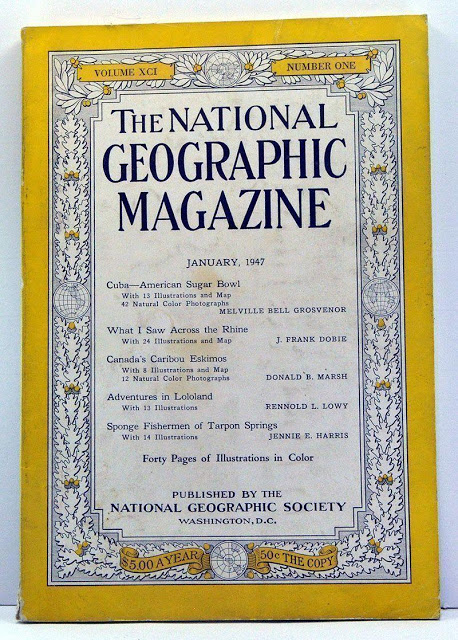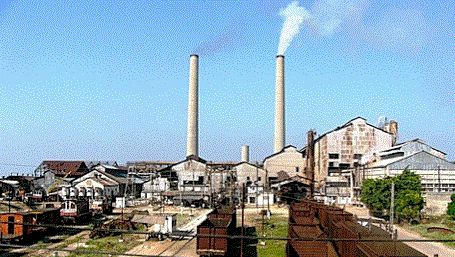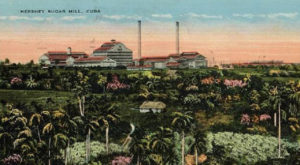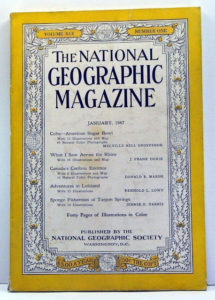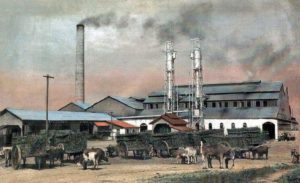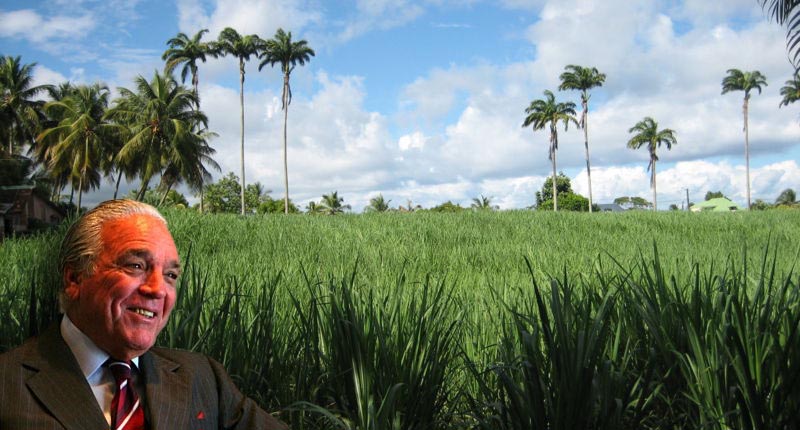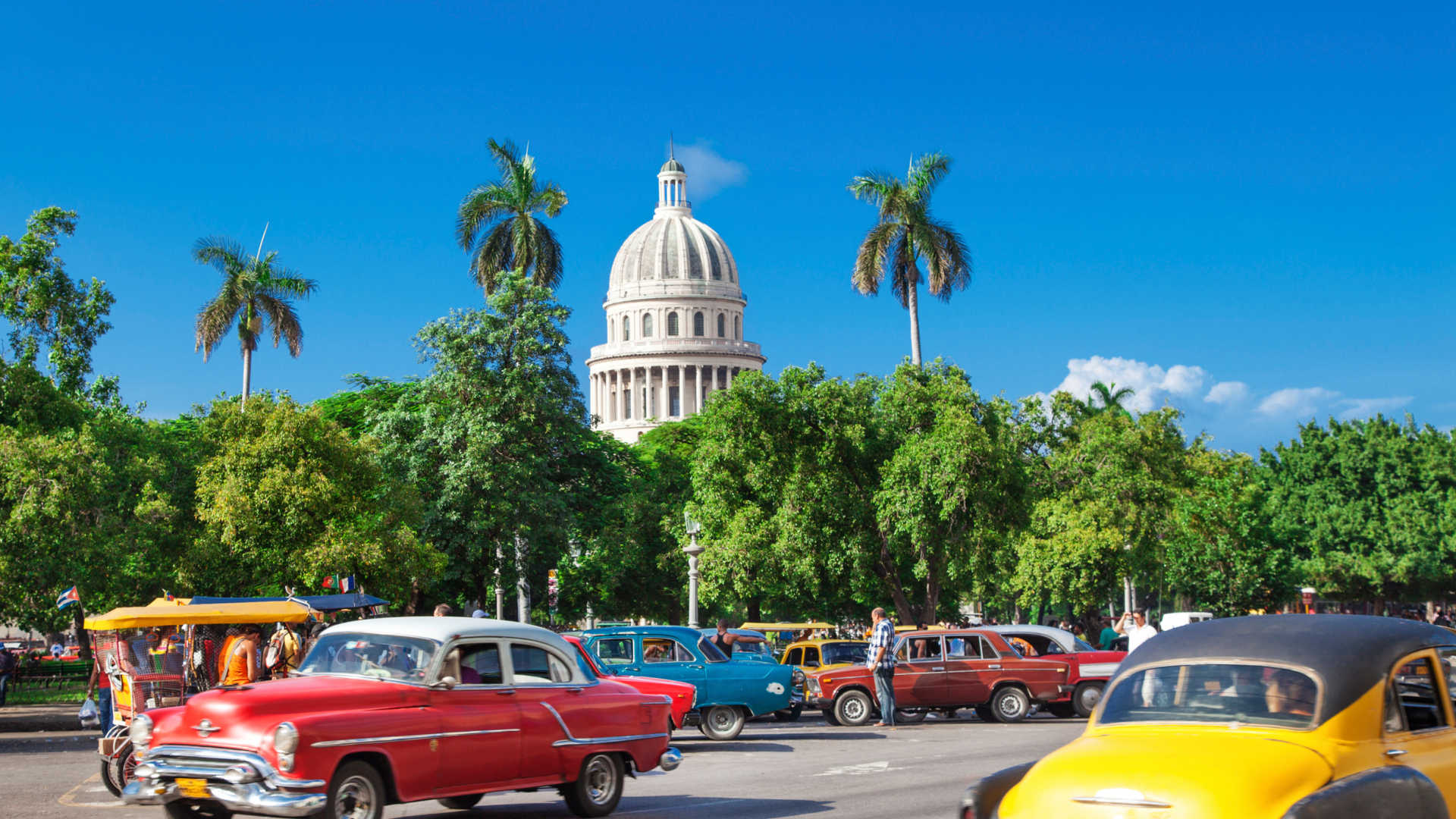In republican Cuba there was a slogan that was above all philosophical and political conceptions: “Without sugar there is no country”. Some considered it an exaggerated phrase, but the revolutionary government showed that it was totally true and objective.
After the government led by Fidel Castro, the phrase must be modified, which would remain as: “Without sugar and without country”
For more than two centuries sugar was a main part of Cuban culture and landscape and if a child was asked to draw something, it was sure to be a hut, with a horse, a cow and a sugar mill with its railroad.
And it was precisely the sugar industry, which led to the November 19, 1837 Cuba became the first country in Latin America with rail, second continent after the US (Albany, 1831), 11 years earlier than in Spain.
I remember a National Geographic magazine from 1947, after the Second World War and whose main article was “Cuba, American Sugar Bowl”, that is, Cuba, the sugar factory of America, and Cuba was the world’s sugar factory for more than 160 years. It reached 1.1 million metric tons in 1894, one third of all the sugar produced in the world. With the war of independence the production fell, but in 1905 1.3 million metric tons were produced in 174 sugar mills, and already in 1925 the harvest reached 5.1 million metric tons, with a quarter of the world production.
But it was not only the largest producer of sugarcane but also the most efficient worldwide, registering 13.17% industrial yield, and in the 1950s the Island exported half of all the world sugar, with a production of 7, 1 million metric tons, in 161 factories and with the highest average industrial performance on the planet.
Production was limited by the import quota agreed with the United States, which paid a price higher than the world market, and which was more than three million tons per year.
Fidel Castro, in his desire for power, in 1960 nationalized the entire sugar industry and the result was that in just two years the production collapsed from 6.8 million metric tons to 3.8 million in the 1962-1963 harvest.
After the collapse of the 1970 harvest, he achieved advantageous negotiations with the Soviet Union. The USSR spent billions of dollars in this area and expanded Cuban sugar production to reach eight million in 1990, building six large sugar mills and also paid 45 cents per pound of sugar, while in the world market was five cents This immense subsidy was reproduced by the re-export of part of the Soviet oil given by Moscow.
But Fidel’s authoritarianism made him burst with rage over the inefficiency of the sugar industry and he made the decision, typical of the Cuban one, to “throw the sofa” and ordered to dismantle 95 of the 156 existing plants and reduce it, so that it would be pasture of the marabou , one million 250 thousand hectares of land. After that, five more were deactivated and at the end 56 plants were in operation.
And he also said on television: “sugar is the ruin of the country” and called sugar production nonsense. He did not care about the history, the culture, the hundreds of thousands of people who lived in the bateyes and villages near the power plants and whose life and economic activity depended on sugar production. I had the opportunity to go to several of those places and the hatred with which they talk about the government that ended their lives is infinite.
These decisions led Cuba to move from the world’s largest sugar exporter to importing country, after almost two centuries of showing that supremacy, and sugar production decreased to the level of 1894, when Cuba was a Spanish colony.
In the 2015-2016 harvest, sugar production did not reach 1.6 million metric tons, of which half is destined for national consumption. It was managed to produce three times less than in 1925, something shameful.
Only one interesting fact, the Fanjul brothers, Cuban sugar industrialists whose properties were seized by Fidel Castro, currently produce more than seven million tons of sugar in their factories in the United States, Mexico, the Dominican Republic, Canada, Great Britain and Portugal.
CUBA: UN LEMA YA OLVIDADO “SIN AZUCAR NO HAY PAÍS”. HISTORIA Y HOY.
En la Cuba republicana había un lema que estaba por encima de todas las concepciones filosóficas y políticas: “Sin azúcar no hay país”. Hay quien consideraba que era una frase exagerada, pero el gobierno revolucionario demostró que era totalmente cierta y objetiva.
Después de el gobierno dirigido por Fidel Castro hay que modificar la frase, que quedaría como :”Sin azúcar y sin país”.
Por más de dos siglos el azúcar fue parte principal en la cultura y el paisaje cubanos y si a un niño le pedían que dibujara algo, seguro era un bohío, con un caballo, una vaca y un central azucarero con su ferrocarril.
Y fue precisamente la industria azucarera, la que propició que el 19 de noviembre de 1837 Cuba se convirtiera en el primer país de Latinoamérica con ferrocarril, segundo del continente luego de EEUU (Albany, 1831), 11 años antes que en España .
Recuerdo una revista National Geographic de 1947, posterior a la Segunda Guerra Mundial y cuyo artículo principal era “Cuba, American Sugar Bowl”, es decir, Cuba, la azucarera de América, y Cuba fue la azucarera del mundo durante más de 160 años. Alcanzó 1,1 millones de toneladas métricas en 1894, un tercio de toda el azúcar producida en el mundo. Con la guerra de independencia la producción cayó, pero en 1905 se produjeron 1,3 millones de toneladas métricas en 174 ingenios, y ya en 1925 la zafra llegó a 5,1 millones de toneladas métricas, con una cuarta parte de la producción mundial.
Pero no solo era el mayor productor de azúcar de caña sino también el más eficiente mundialmente al registrar un 13,17% de rendimiento industrial, y en los años 50 la Isla exportaba la mitad de toda el azúcar mundial, con una producción de 7,1 millones de toneladas métricas, en 161 fábricas y con el rendimiento industrial promedio mayor del planeta.
La producción se limitó por la cuota de importación acordada con Estados Unidos, país que pagaba un precio superior al mercado mundial, y que era mayor a tres millones de toneladas anuales.
Fidel Castro, en su afán de poder, en 1960 nacionalizó toda la industria azucarera y el resultado fue que en solo dos años la producción se derrumbó de 6,8 millones de toneladas métricas a 3,8 millones en la zafra 1962-1963.
Después del descalabro de la zafra de 1970, logró ventajosas negociaciones con la Unión Soviética. La URSS gastó miles de millones de dólares en este rubro y amplió la producción azucarera cubana hasta llegar a ocho millones en 1990, construyendo seis grandes centrales azucareros y además pagaba 45 centavos de dólar por libra de azúcar, mientras en el mercado mundial estaba a cinco centavos. Este subsidio inmenso se reproducía por la reexportación de parte del petróleo soviético regalado por Moscú.
Pero el autoritarismo de Fidel lo hizo reventar de rabia por la ineficiencia de la industria azucarera y tomó la decisión, típica del cubano, de “botar el sofá” y ordenó desmantelar 95 de los 156 centrales existentes y reducir, para que fuera pasto del marabú, un millón 250 mil hectáreas de tierras. Después fueron desactivados cinco más y quedaron al final 56 centrales en funcionamiento.
Y además dijo por televisión: “el azúcar es la ruina del país” y calificó de disparate la producción azucarera. No le importó la historia, la cultura, los cientos de miles de personas que vivían en los bateyes y pueblos cercanos a los centrales y cuya vida y actividad económica dependía de la producción azucarera. Tuve oportunidad de ir a varios de esos lugares y el odio con que hablan del gobierno que les acabó la vida, es infinito.
Estas decisiones hicieron que Cuba pasara de mayor exportador de azúcar del mundo a país importador, después de casi dos siglos de ostentar esa supremacía, y la producción del azúcar disminuyó al nivel de 1894, cuando Cuba era una colonia española.
En la zafra de 2015-2016, la producción azucarera no llegó a los 1,6 millones de toneladas métricas, de las cuales se destina la mitad al consumo nacional. Se logró llegar a producir tres veces menos que en 1925, algo vergonzoso.
Solo un dato interesante, los hermanos Fanjul, industriales azucareros cubanos cuyas propiedades fueron incautadas por Fidel Castro, producen actualmente más de siete millones de toneladas de azúcar en sus fábricas de Estados Unidos, México, República Dominicana, Canadá, Gran Bretaña y Portugal.
Agencies/MemoriasCubanas/Carlos Rodríguez/Internet Photos/ Arnoldo Varona/ TheCubanHistory.com
THE CUBAN HISTORY, HOLLYWOOD.




